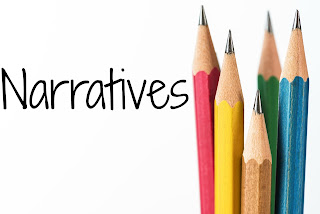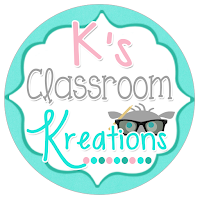One of the first types of writing styles we commonly look at are narratives. Students LOVE telling stories that are important to them. Here are a few of my favorites:
When I Was Five by Arthur Howard is a cute story about what a child enjoyed when he was five, and what he enjoys now that he is slightly older. Students can easily connect to when they were five and share what was important to them. Making these text to self connections is important when first looking at the way an author presents himself. I like to have students follow the same sentence patterns as the book and write about when they were younger.Any book by Patricia Polacco is really an ideal mentor text. The story Thunder Cake is great when looking at small moments and something that is so important to the character. After reading the whole story I like to focus in on the descriptive language, words that show sounds, and have students think about a time they were scared of something. What did they do to get through it? The book acts as a great launching point for conversations and writing.
Diary of a Worm by Doreen Cronin is such a cute book! I love showing students how this book is written from the point of view of a worm. The author does a great job of adding in speech bubbles/font choices, comedy, and perspective. We are reading this book next week as our mentor text in both reading and writing and I know my kids will get a kick out of it. I can't wait to see what they come up for their own writing based on this book. Another great book that shows an animal's (ants) point of view is Two Bad Ants by Chris Van Allsburg.
When teaching about how-to writing, I typically show my students recipes, game directions, and any other informational (and hopefully real life) example of directions. The book How to Take Your Grandmother to the Museum by Lois Wyse and Molly Rose Goldman is a funny little fictional story that puts a twist on traditional how to writing. Kids can use the book as inspiration about a time they helped someone. What did they do together? What order did everything happen in?
One of my all time favorite books for word choice is The Salamander Room by Anne Mazer. I absolutely love the descriptive language. I typically use this book in reading when introducing how we can visualize to help us understand a book better. I first read the book without showing them any of the pictures and allow them to draw their own vision. Then, we use it again with the mindset of writers and notice how the descriptive language really pulls us in. Again, students can start with a detailed illustration of a place that is special to them and learn how to use descriptive language to help their audience picture it as well.
I don't know about your kids but many of mine always seem to "get stuck" when trying to come up with ideas to write about. I have written about ways to inspire and motivate writers before and feel that using mentor texts is just one more way to do this.
Who is the main character?
Who are the family members?
Where are they trying to go?
Who comes to save the day?
What does the happy ending look like?
A few years ago I had each child make their own book and bound it for them. Last year I wanted to integrate more technology. I had each child make their own book, but then also type their story into a word document. I edited the word documents and printed each out. Students added their best illustrations. I then photocopied all of the class stories back to front (1 page per child). Finally, I printed each set of class stories for every child in the classroom as an end of year gift. Although it did take a TON of ink, every child loved their book and I think it is something that their families can hang on to for years. Students were so creative with stories like Snake-arella, Unirella (unicorn), and Catarella (cats).The same could be done with any other series of books that you may have like Goldilocks and the Three Bears, Three Little Pigs, or The Gingerbread Man (another favorite of mine/obsession!).
Another set of books to help generate ideas are by Harriet Ziefert. She has many wonderful titles but Cousins Are for Holiday Visits and Grandpas Are For Finding Worms are two that we enjoy. Students can then brainstorm any other ideas that the author "missed" when writing about the person and create their own versions of the book. They could also write about someone else that is important to them and list all of the reasons why.
When learning about opinion writing I like to use I Wanna New Room or I Wanna Iguana by Karen Kaufman Orloff. We look at the style of the book and how the author uses letters back and forth between characters as the way of telling the story. We also look at how the characters try to convince each other that their opinion is best. Students then try to convince me to do something in the classroom by either working independently or in teams, depending on the time of year. Some ideas have included "I Wanna Have Extra Recess" and "I Wanna Chew Gum".
I really enjoy fairy tales, and also fractured fairy tales. Little Red Writing by Melissa Sweet is a story about a pencil that is trying to tell about Little Red Riding Hood but keeps getting into trouble. The pages are filled with different sized words and fonts, words traveling all over the pages, speech bubbles, fun words for sounds, and tons of expression. Looking at all of the features in this book really helps students see that not all books look the same.
The What If series is so much fun! What If You Had Animal Teeth (or feet, hair, or ears) helps students focus on one topic and imagine how their life would be different. You can then have students write what it would be like if they did in fact have a certain animal's characteristics. Or, students could come up with their own What If you Had... story.
Lastly, when generating ideas, I love to use ABC books as inspiration. Students can easily brainstorm all of the details that go along with a topic. The ABC framework is also simple to use and can be done even in the beginning of the school year. Students could create a class book or individual student books based on abilities.
I hope you have been inspired by your own library and can look at many of your favorite books through the eyes of a writer! What are some of your favorite books for mentor texts?
If you liked what you read I would love for you to connect with me through my own blog, Facebook page, Instagram, Pinterest, or Teacher’s Pay Teachers store. Thanks again for stopping by!
Want to put a few of these books on your wish list for later? Pin here:



















0 comments:
Post a Comment
Note: Only a member of this blog may post a comment.